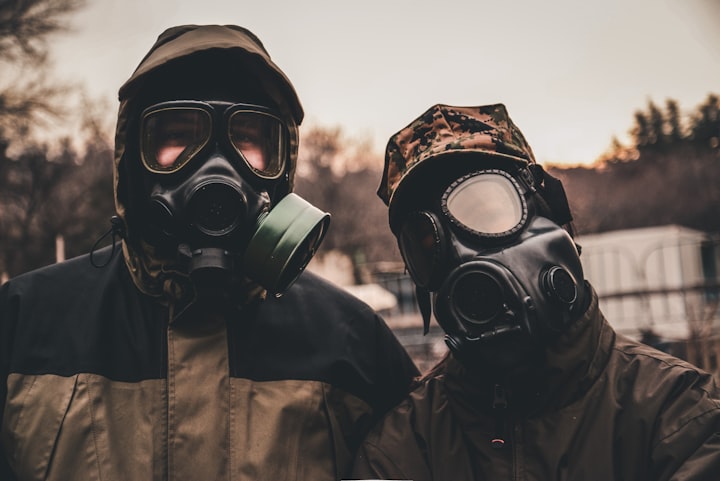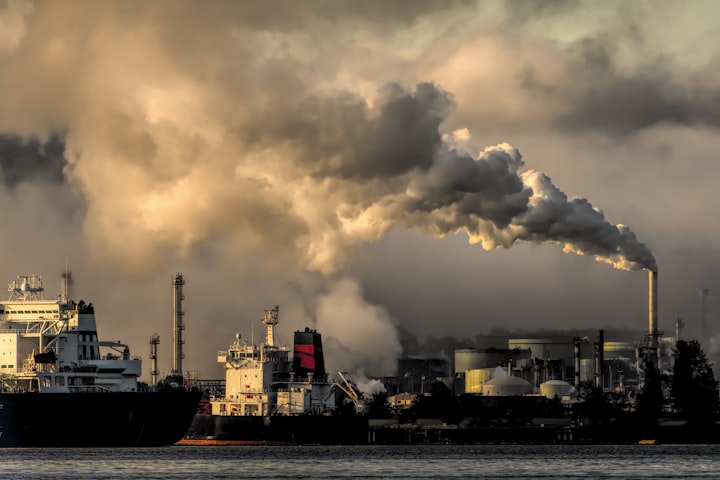The Chernobyl Disaster
A Nuclear Catastrophe That Shook the World

In the early hours of April 26, 1986, a catastrophic event unfolded at the Chernobyl Nuclear Power Plant in Pripyat, Ukraine. The world was about to witness one of the worst nuclear disasters in history, leaving an indelible mark on the environment, human health, and our understanding of nuclear safety.
- The Chernobyl Nuclear Power Plant
Located approximately 110 kilometers north of Kyiv, the Chernobyl Nuclear Power Plant was one of the largest and most advanced nuclear facilities of its time. The plant consisted of four reactors, each capable of producing a substantial amount of electricity for the Soviet Union.
On that fateful night, reactor number 4 was scheduled for a routine safety test to simulate a power outage. The objective was to assess whether the reactor's emergency cooling system could maintain stability during a shutdown. Little did anyone know that this seemingly routine procedure would lead to an unimaginable disaster.
- The Explosion and Fire
As the test commenced, unforeseen circumstances and a series of human errors combined to create a perfect storm. A sudden and uncontrollable increase in reactor power triggered a catastrophic explosion, causing the reactor's graphite-tipped control rods to jam. This led to a rapid power surge, fueling a fire that raged within the reactor core.
The graphite fire released a plume of highly radioactive materials into the atmosphere. The radioactive fallout, carried by the wind, spread over vast regions of the Soviet Union and beyond, affecting Ukraine, Belarus, Russia, and parts of Europe.
- The Aftermath and Containment
In the immediate aftermath of the explosion, plant workers and emergency responders faced an unprecedented crisis. They worked tirelessly to extinguish the fire and prevent further damage to the remaining reactors. The disaster claimed the lives of two plant workers instantly, and many more would later succumb to acute radiation sickness.
To contain the radioactive contamination, a temporary sarcophagus was hastily constructed around the destroyed reactor. Named the "Chernobyl Shelter," this structure was a desperate attempt to limit the spread of radiation.
The Chernobyl Shelter was only meant to be a temporary solution, and a more permanent containment structure was necessary to ensure long-term safety. In 2016, an ambitious engineering feat was achieved—the completion of the New Safe Confinement (NSC), a massive steel arch that now encloses the former reactor, preventing further radiation leaks.
- The Human Toll: A Legacy of Suffering
The immediate impact of the Chernobyl disaster was devastating. The explosion and subsequent radioactive release forced the evacuation of thousands of residents from nearby towns and villages. The once-thriving city of Pripyat, with a population of nearly 50,000, became a ghost town overnight.
Tens of thousands of people, including plant workers, firefighters, and liquidators, were exposed to dangerously high levels of radiation while attempting to contain the disaster. Many suffered from acute radiation sickness, and countless others developed various forms of cancer and other health complications over time.
The effects of the disaster were not confined to the immediate vicinity of Chernobyl. The radioactive plume spread far and wide, affecting agriculture, wildlife, and water sources in neighboring countries. The long-term impact on human health and the environment would continue to be felt for generations to come.
In the wake of the disaster, the Soviet government established an exclusion zone around the Chernobyl Nuclear Power Plant. This zone, spanning approximately 2,600 square kilometers, restricted access to the most heavily contaminated areas.
Today, the Chernobyl Exclusion Zone is a haunting reminder of the disaster. Pripyat and surrounding villages lie frozen in time, their decaying buildings and overgrown streets serving as a somber testament to the cost of nuclear energy gone awry.
- Lessons Learned: Strengthening Nuclear Safety
The Chernobyl disaster was a wake-up call for the world. It exposed the vulnerabilities of nuclear power plants and the dire consequences of inadequate safety measures.
In the aftermath of the disaster, governments and international organizations intensified efforts to improve nuclear safety standards. The International Atomic Energy Agency (IAEA) established new guidelines and regulations for nuclear facilities, aiming to prevent similar catastrophes in the future.
- Chernobyl Today: A Journey of Resilience
In recent years, the Chernobyl Exclusion Zone has seen a resurgence of interest, attracting tourists, scientists, and documentary filmmakers. As radiation levels have decreased over time, guided tours within certain areas of the zone have become possible, allowing visitors to witness the eerie beauty of the abandoned city and its surroundings.
While the disaster left an enduring scar on the region, nature has demonstrated remarkable resilience in the face of adversity. The Exclusion Zone has become an unintended sanctuary for wildlife, with thriving populations of endangered species such as wolves, lynxes, and eagles.
- The Chernobyl Disaster's Legacy
The Chernobyl disaster stands as a grim reminder of the potential dangers associated with nuclear energy. It is a testament to the resilience of the human spirit and the importance of safeguarding the planet and its inhabitants.
As the world continues to pursue advancements in science and technology, the lessons of Chernobyl serve as a constant call for vigilance and responsibility in harnessing the power of nuclear energy. The memory of the tragedy remains etched in history, a stark reminder that the pursuit of progress must always be tempered with a commitment to safety and environmental stewardship.





Comments
There are no comments for this story
Be the first to respond and start the conversation.